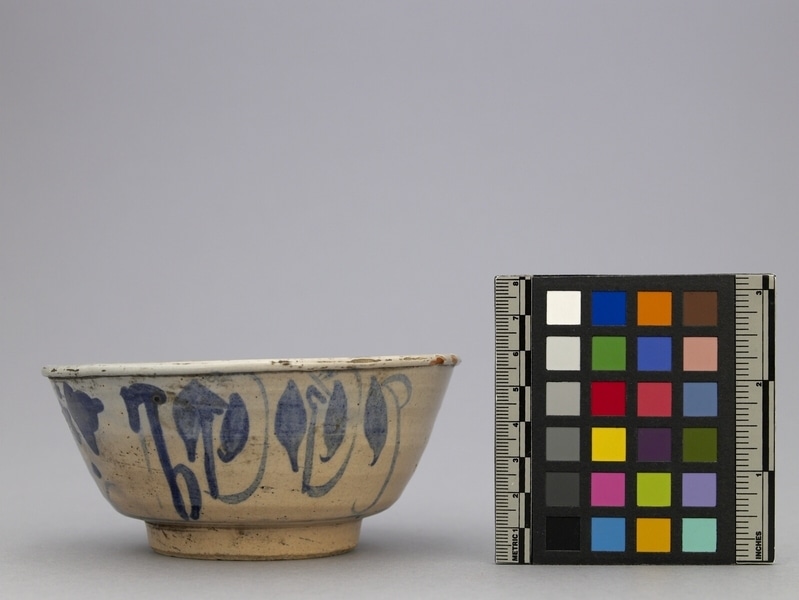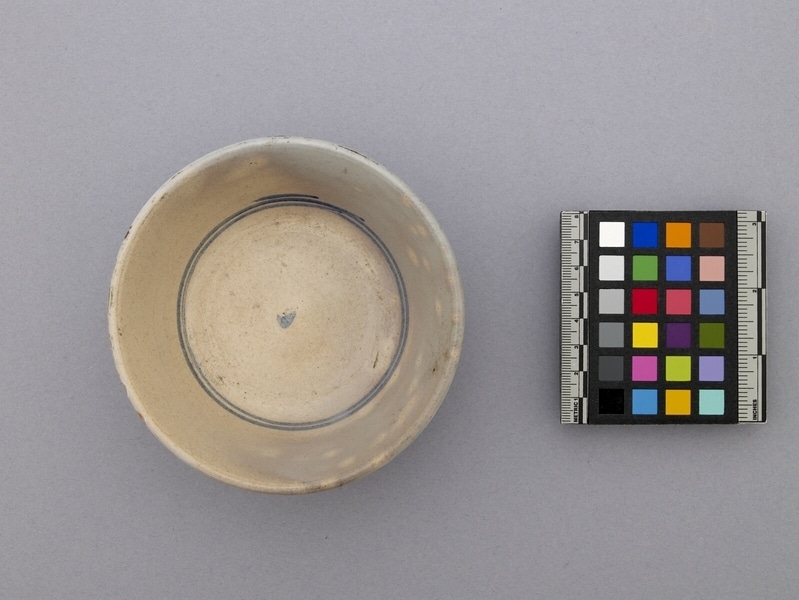Bowl Item Number: Edz1050 from the MOA: University of British Columbia



Description
Steep-sided bowl with a raised foot ring. Decorations are in blue on a peach ground. Interior has a small spot at the centre and two rings around base of walls; exterior has flower and leaf design over a 120 degree area and then on the remaining face is an empty circle and one character.
History Of Use
Such bowls were used by individual family members to hold rice while eating. For Hakka people, they were also used in the ceremony held to install the soul of a deceased family in the tablet representing ancestors in the lineage ancestral hall. If the deceased family member was more than sixty years of age, the bowls used in this ceremony were considered to carry good fortune and were used thereafter as rice bowls for the children in the family. This bowl may have been made in the well-known kilns in Wun Yu, Tai Po, Hong Kong.
Iconographic Meaning
If such a bowl was used in the ceremony to install the soul of a deceased family member, who had died at more than sixty years of age, into the tablet in the lineage ancestral hall, it would represent long life, and was called a '100 years of life' bowl.
Item History
- Made in Hong Kong, China ?
- Collected by Elizabeth L. Johnson in Macau during 1980
- Owned by Elizabeth L. Johnson before March 17, 1980
- Received from Elizabeth L. Johnson (Seller) and Museum of Anthropology Shop Volunteers (Funding source) on March 17, 1980
What
Who
- Culture
- Chinese
- Field Collector
- Elizabeth L. Johnson
- Previous Owner
- Elizabeth L. Johnson
- Received from
- Elizabeth L. Johnson (Seller) and Museum of Anthropology Shop Volunteers (Funding source)
Where
- Holding Institution
- MOA: University of British Columbia
- Made in
- Hong Kong, China ?
- Collected in
- Macau
When
- Collection Date
- during 1980
- Ownership Date
- before March 17, 1980
- Acquisition Date
- on March 17, 1980
Other
- Item Classes
- ceramics
- Condition
- good
- Accession Number
- 0610/0020